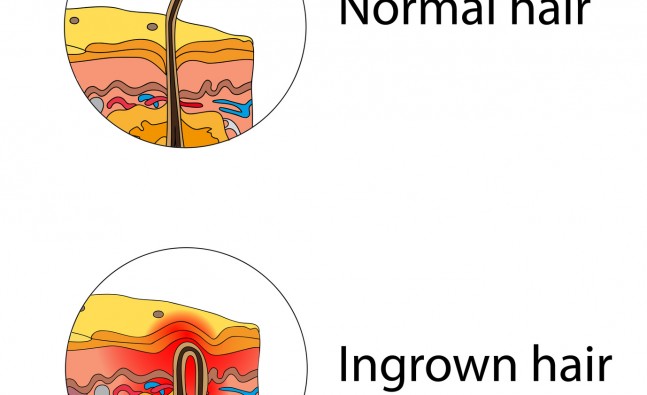
While it may be a common skin problem, ingrown hairs or “razor bumps” can be painful, cause disfigurement and frustrating to treat.
What causes ingrown hairs?
Various types of hair removal – waxing, shaving, plucking and threading – can lead to ingrown hair, according to Nada Elbuluk, MD, MSc, assistant professor in the Ronald O. Perelman Department of Dermatology at NYU Langone Medical Center, who also practices at NYU’s Joan H. Tisch Center for Women’s Health.
That said, people whose hair has the tendency to curl back or grow sideways in a hair follicle are known to be particularly prone to ingrown hairs.
Ingrown hairs may appear to look like acne of which some of the bumps have a visible hair trapped inside them. They can also be accompanied by pustules and skin discoloration. Furthermore, they can be painful and itchy as well as cosmetically disfiguring.
How to treat an ingrown hair
Coaxing hair out of the “bump” at home by poking or tweezing should be avoided, as this can potentially introduce new bacteria into the follicle and worsen the problem.
Ingrown hairs that are seriously irritated and/or infected are best treated by a certified dermatologist. A dermatologist can also recommend a regimen of anti-bacterial washes and creams as well as topical retinoids that can help treat the area and prevent future ingrown hairs.
Over the counter products containing benzoyl peroxide, as well as exfoliating ingredients such as glycolic acid and salicylic acid, also can help in the treatment and prevention of ingrown hairs.
“Keeping skin moisturised and exfoliated not only makes it easier to shave, but it can help remove dead skin and hairs that may clog the hair follicles, as well as promote hair growth in the right direction,” says Dr. Elbuluk.
How to avoid getting ingrown hairs
Letting hair grow is one option for avoiding the issue of razor bumps. However, if letting hair grow is not an option, Dr. Elbuluk offers some practical tips for dealing with ingrown hairs or razor bumps:
- Shave in the direction of the hair growth
- Avoid shaving over the same area multiple times
- Avoid shaving the hair too close to the skin
- Shave less often
- When using a razor blade, make sure the skin is wet before shaving and use a moisturising shaving cream, gel, or foam while shaving
- Use of hair-removing creams or clippers instead of blade razors can sometimes help decrease the occurrence of ingrown hairs
“One of the worst things to do when having ingrown hair is to continue to shave and remove hair in the affected region,” Dr. Elbuluk advises. “It is best to wait until razor bumps have resolved before going back to shaving or engaging in further hair removal at the site.”
